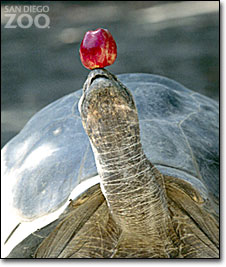Getting Your Kids to Eat Healthy
 During a trip to the San Diego Zoo several years ago my daughter and I noticed a sign near the vending machine that said, “Foods in the machines are for humans only. Do not feed this food to animals or they may get sick and die” The zoo veterinarians know that these foods will endanger the health of a 400 lb ape. So I am wondering what this type of food does to us?The typical junk foods that are specifically marketed for children can hasten diabetes, hypertension, and heart disease. . Proper diet and nutrition in early childhood are essential. A child’s diet in the womb, during infancy, and as a toddler can have lifelong effects on his or her health. Researchers are showing that a baby’s food preference can be traced to the womb.
How to Motivate kids to eat more fruits and veggies
It’s not exactly news and it’s certainly not a secret – Americans should eat more fruits and vegetables. The national 5 A Day – for Better Health program has permeated our grocery stores, schools and the media with important reminders about the health benefits of veggies and fruit. With more than 1800 organizations across the nation promoting 5 A Day, this program is the nation’s largest public/private nutrition education programBut while the campaign has succeeded in raising awareness, the gap between knowledge and behavior remains. In other words, the challenge is to convince kids to eat more fruits and veggies. According to the latest government statistics, only one in five children eats the minimum daily recommendation of three servings of vegetables and two servings of fruit each day.
Of the vegetables eaten by children ages 6-11, approximately 55-60% come from either potatoes or tomatoes (translation: french fries, ketchup and pizza sauce). Children have especially low intakes of the extra nutrient-rich dark green leafy and deep yellow varieties(1).
Likewise, kids get the majority of their fruit intake from fruit juice. Children ages 6-11 averaged a mere one-half serving daily of the more nutrient dense fruits, including citrus, melons and berries(1).
During a trip to the San Diego Zoo several years ago my daughter and I noticed a sign near the vending machine that said, “Foods in the machines are for humans only. Do not feed this food to animals or they may get sick and die” The zoo veterinarians know that these foods will endanger the health of a 400 lb ape. So I am wondering what this type of food does to us?The typical junk foods that are specifically marketed for children can hasten diabetes, hypertension, and heart disease. . Proper diet and nutrition in early childhood are essential. A child’s diet in the womb, during infancy, and as a toddler can have lifelong effects on his or her health. Researchers are showing that a baby’s food preference can be traced to the womb.
How to Motivate kids to eat more fruits and veggies
It’s not exactly news and it’s certainly not a secret – Americans should eat more fruits and vegetables. The national 5 A Day – for Better Health program has permeated our grocery stores, schools and the media with important reminders about the health benefits of veggies and fruit. With more than 1800 organizations across the nation promoting 5 A Day, this program is the nation’s largest public/private nutrition education programBut while the campaign has succeeded in raising awareness, the gap between knowledge and behavior remains. In other words, the challenge is to convince kids to eat more fruits and veggies. According to the latest government statistics, only one in five children eats the minimum daily recommendation of three servings of vegetables and two servings of fruit each day.
Of the vegetables eaten by children ages 6-11, approximately 55-60% come from either potatoes or tomatoes (translation: french fries, ketchup and pizza sauce). Children have especially low intakes of the extra nutrient-rich dark green leafy and deep yellow varieties(1).
Likewise, kids get the majority of their fruit intake from fruit juice. Children ages 6-11 averaged a mere one-half serving daily of the more nutrient dense fruits, including citrus, melons and berries(1).
PRODUCING 5-A-DAY EATERS
Bridging the Gap Between Knowledge & Behavior
Offer several fruit and vegetable choices. In one study(2), when researchers looked at data from a school nutrition education project, they found that children ate more fruits and vegetables for lunch when schools offered more fruits and vegetables for lunch!Include at least one cooked vegetable each day. While some kids prefer salad and carrot sticks, others prefer their veggies hot.
Introduce new fruits and vegetables one at a time. Don’t give up if an item isn’t well accepted at first. Kids often require multiple exposures to a new food before they will take their first bite To improve acceptance of fruits and vegetables at mealtime, host cooking/tasting sessions for students. Research done with Cookshop(3), a food-based nutrition education program, showed that when the curriculum included cooking in the classroom, students ate more of the same foods (grains and vegetables) served in the cafeteria. Sometimes it is difficult if not impossible to get a good variety of foods in your children’s diet. Shaklee Corporation makes one of the most complete advance children’s products
